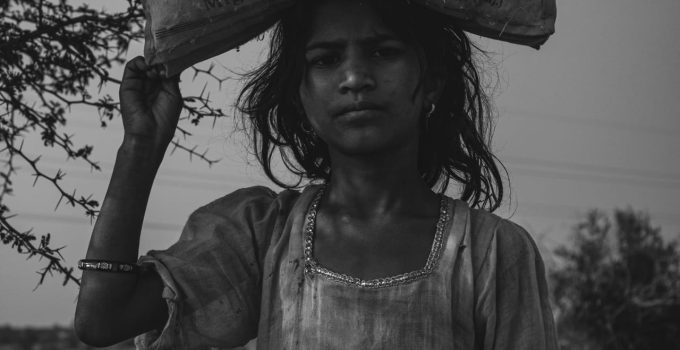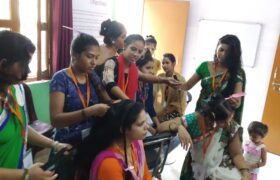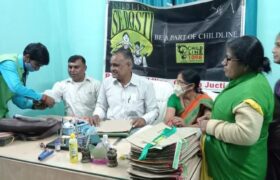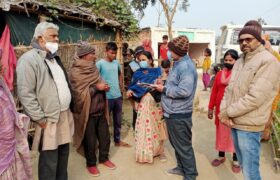Child labour remains one of the most serious social issues in India. The country has seen economic growth, constitutional provisions and more than 20 legislations concerning issues relating to children passed, but the reach of millions continues to remain engaged in labour. These are children who should be at their schoolroom desks and growing up with a modicum of security and dignity. This blog discusses the underlying triggers, present situation, impact, and remedial measures of Child Labour in India while underlining the shared responsibility of Citizens, Government as Local Administration, and all concerned preventive aspects.
What Is Child Labour?
Child labour is the illegal exploitation of children, forcing them to do work that’s going to harm their mental, physical and emotional development. “Work which is harmful to the physical, mental or moral development of children and is damaging education,” the ILO defines child labour.
In India, employment of children below 14 years is illegal under the Child Labour (Prohibition and Regulation) Amendment Act 2016, except in the life insurance business, where the minimum age to join a job is reduced. It also prohibits the dangerous work of 14-18-year-old adolescents.
But child labour remains rampant in many sectors despite these laws due to social and economic factors.
The Present Scenario of Child Labour in India
India has no data on child labour, but it is known to have one of the highest rates. As per the Census of India 2011, there are above 10.1 million child labourers in the age group of 5-14 years. While that number has declined from previous decades, millions of children in unreported or concealed forms of labour, like domestic work, bonded labour and illegal factories, are not counted.
Typical Areas of Child Labour
- Agriculture: Young workers are employed in fields, farmland, and plantations.
- Household Service: In urban areas, many children work as domestic servants.
- Brick Kilns & Construction: Labour-intensive work with high risk of injury.
- Clothing and Textiles: Frequently found in small factories or home-based enterprises.
- Tea Shops, Dhabas and Hotels: The long hours for little or no money.
- Street Work: Collection of used rags, street vending, and shoe shining.
- Bonded Labour: Several children are made to work as child labourers in order to clear family debts.
Economic backwardness and absence of education keep this form of child labour more prevalent in developed states such as Bihar, Uttar Pradesh, Rajasthan, Madhya Pradesh and Maharashtra.
Causes of Child Labour in India
Child labour is a complex issue driven by multiple social and economic factors. Some of the major causes include:
1. Poverty
Poverty is the leading cause of child labour. Families struggling for basic survival often push their children to earn rather than attend school. For many, a child’s income means food on the table.
2. Lack of Access to Education
Schools in rural and backward areas lack infrastructure, teachers, and quality learning. Many children drop out of school and enter the labour force due to limited educational opportunities.
3. Unemployment of Adults
When parents lack employment or a stable income, children become an alternative earning source for the family, increasing the risk of labour exploitation.
4. Social Inequality and Caste System
Child labour is more prevalent in marginalised communities.” The children of the Dalit, tribal and minority communities are subjected to social exclusion and economic deprivation.
5. Migration and Displacement
Families moving from the countryside to urban areas in the hope of finding work usually include their children, who become low-paid workers when they arrive.
6. Demand for Cheap Labour
Children are preferred by many industries, since they will work at lower pay and can be more easily exploited. Employers take advantage of their vulnerability.
7. Lack of Awareness in Parents
Many low-income parents are ignorant of how child labour affects their child’s rights, future, and health over the long run.
Consequences of Child Labour
Child labour causes tragic consequences to the child as well as to society at large.
1. Physical and Mental Health Hazards
Poor working conditions lead to injuries, malnutrition, respiratory ailments, and exposure to hazardous chemicals. Excessive working hours impinge on overall development and growth.
2. Deprivation of Education
Child labour encourages children to withdraw from school, and thus they become victims of poverty. If they don’t study, they can not acquire well-paying jobs as adults.
3. Emotional and Psychological Abuse
Most children employed in homes, factories, or on the streets experience abuse, harassment, and exploitation, leading to trauma, depression, and lack of self-esteem.
4. Violation of Child Rights
Child labour is a direct contravention of basic human rights, such as the right to education, freedom, and life with dignity.
5. Loss to Society
By depriving children of education and skill-building, the country loses the pool of human potential that will impact long-term economic growth.
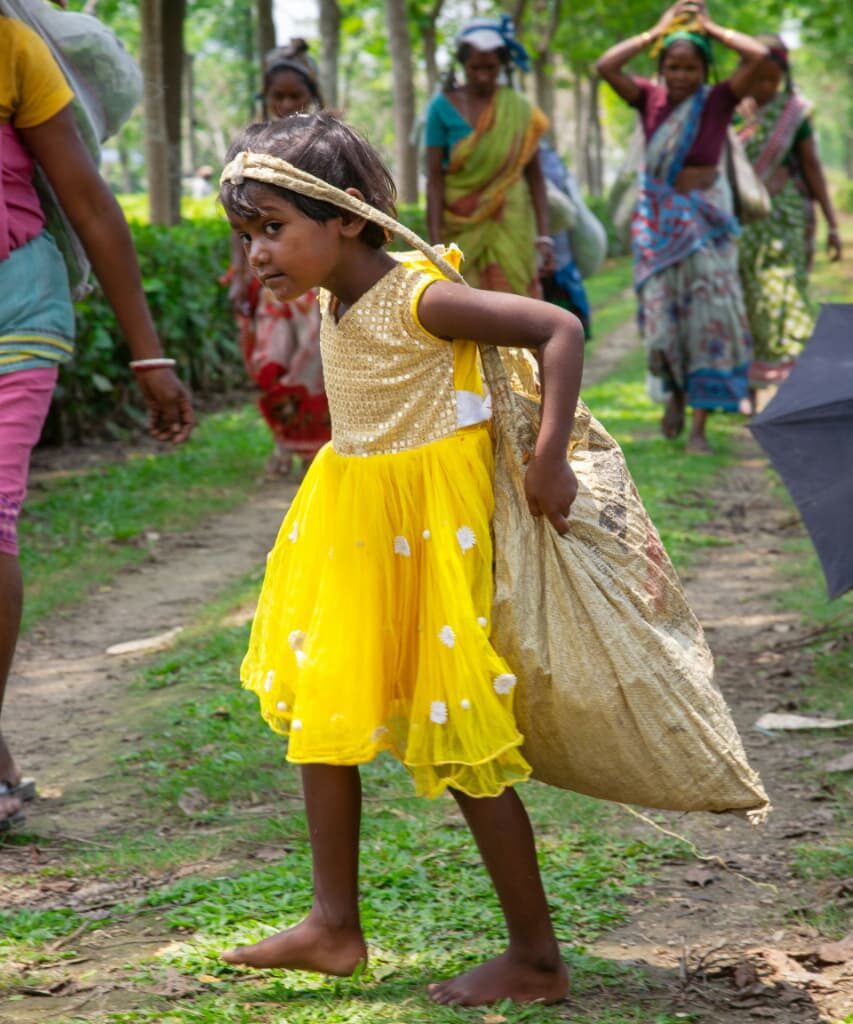
Laws and Policies Against Child Labour in India
India has enacted various laws and schemes to curb child labour:
1. Child Labour (Prohibition and Regulation) Amendment Act, 2016
- Prevents the employment of children aged less than 14 years.
- Prevents hazardous work among adolescents aged 14–18 years.
- Imposes stricter penalties on employers.
2. Right of Children to Free and Compulsory Education Act, 2009 (RTE Act)
- Makes elementary education a child’s fundamental right between the ages of 6-14 years.
3. Juvenile Justice (Care and Protection of Children) Act, 2015
- Treats child labour as exploitation and accords legal protection to child victims.
4. Bonded Labour System (Abolition) Act, 1976
- Releases children and families ensnared in bonded labour.
5. National Child Labour Project (NCLP) Scheme
- Saves child labourers and offers education and vocational training.
Despite all these legal frameworks, enforcement continues to be a significant problem because of corruption, the absence of monitoring, and societal tolerance of child labour.
Hidden Forms of Child Labour
Not all child labour is seen. Most children are involved in hazardous, hidden, and exploitative work within houses or private locations. These include:
- Child Domestic Workers: Particularly young girls who are abused.
- Children Trafficked: Engaged in forced labour, begging, or prostitution.
- Home-Based Labour: Embroidery, bangle, zari work, or rolling beedis.
They are hard to detect since they mostly take place behind closed doors.
Child Labour in Rural and Urban Areas
| Aspect | Rural Areas | Urban Areas |
| Type of Work | Agriculture, herding animals, reaping and cottage industries | Hotels, garages, factories, street vending, and construction work |
| Visibility | Low | High |
| Reasons | Hotels, garages, factories, street vending, and construction work | Migration, unemployment, need for inexpensive labour |
Role of Society in Continuing Child Labour
Child labour is not only an economic problem but also a social issue. Most people still use children in homes and shops, believing they are “assisting poor families.” Actually, they are encouraging exploitation. A shift of mindset is required to reduce child labour.
Some of the detrimental social beliefs are:
- “Employment makes children capable.”
- “Poor children have to work to survive.”
- “Education is not for all.”
These attitudes need to be countered with cognisance and firm action
Solutions to Eradicate Child Labour
To eradicate child labour in India, multi-level approaches including government intervention, community mobilization, corporate social responsibility, and global cooperation are necessary.
1. Poverty Reduction
Poverty reduction through economic growth and livelihood interventions for poor households can eliminate the dependency on children’s earnings. Government initiatives shall provide employment opportunities and social protection to vulnerable households.
2. Quality Education for All
Schools must be made more accessible with improved infrastructure, qualified teachers, and secure environments. Midday meals, scholarship, and free stationery should be increased in order to promote school-going.
3. Effective Enforcement of Laws
Stronger monitoring of factories and proper punishment for those employing children should be done. Labour officials should conduct regular raids and rescue missions.
4. Rehabilitation of Child Labourers
Rescued children must be given education, counselling, nutrition, and vocational training to restore their lives.
5. Awareness Campaigns
Societies need to be made aware of the evils of child labour. NGOs, schools, and media can spread awareness against child employment.
6. Corporate Responsibility
Industries need to adopt ethical supply chains and never outsource work to units employing child labour. Certification schemes can encourage child-labour-free products.
7. Community Participation
Local communities should create vigilance committees to report cases of child labour. Gram panchayats and ward committees have to play active roles.
8. Migration and Trafficking
Migrant children require special protection against trafficking and exploitation. Child tracking systems must be adopted in order to track vulnerable children.
Role of NGOs and Civil Society
Non-governmental organisations (NGOs) play a crucial role in rescuing, rehabilitating, and educating child labourers. They also contribute to community awareness and policy advocacy. NGOs such as Bachpan Bachao Andolan, Child Rights and CRY, Save the Children, Campaign Against Child Labour (CACL), Child Care Society, Saran and many grassroots NGOs are working day and night to combat child labour in India.
Their services are:
• Operating bridge schools for rescued children
• Legal aid and protection services
• Community awareness and counselling
• Vocational training and rehabilitation
Real-Life Stories: Voices of Child Labour Survivors
To grasp the seriousness of child labour, one should listen to the children themselves.
Story of Raju (Bihar):
Raju was merely 10 years old when he began working in a brick kiln to help his family. He used to work 12 hours a day lifting heavy bricks. Once an NGO Child Care Society, Saran freed him, and he was admitted to a residential school and now wishes to become a teacher.
Story of Meena (Rajasthan):
Meena was coerced into doing domestic work in Jaipur when she was 12 years old. She was verbally abused and never allowed to learn. She is now back in school after intervention from child welfare services and wishes to be a nurse to assist others like her. The above stories illustrate the way education and assistance can change lives.
Why Eliminating Child Labour Matters
Abolishing child labour is not only a legal and moral requirement but a necessity to complete India’s growth. A country cannot develop when its children lack education and dignity. Investing in children today will create a more robust and prosperous country tomorrow.
Child labour creates a cycle of poverty, illiteracy, and inequality. When children are educated and empowered, they become productive citizens who can give back to society and the economy.
How You Can Help Combat Child Labour
There is a role for every citizen to put an end to child labour. Here’s how you can help:
- Do not use child labour in homes, farms, shops, or businesses.
- Report instances of child labour to local authorities or child helplines.
- Support anti-child labour organisations.
- Make people in your neighbourhood and social groups aware of the issue.
- Sponsor a child’s education from a poor background.
- Foster fair trade and purchase products from companies that practice ethics.
Always remember, every small action counts a lot.
Government Helplines and Resources
In case you encounter a case of child labour, you can approach:
- Child Helpline 1098 – 24X7 Service helpline for distressed children
- Local Child Welfare Committee (CWC)
- District Child Protection Unit (DCPU)
- Police Emergency Number 112/100
Conclusion
Indian child labour is an entrenched phenomenon connected with poverty, unemployment, social injustice, and illiteracy. It cannot be abolished by legislation. There has to be a joint approach from the government, NGOs, companies, communities, and individuals to safeguard the rights of children.
All children are entitled to education, protection, and a childhood with dignity. By assuming collective responsibility and advocating child-friendly policies, we can create a society where no child is compelled to work and all children have the chance to dream and thrive.
Stopping child labour is not a goal—it is a moral obligation. Let us together be the voice for the voiceless children and give them a secure and bright future.
“Childhood is not a business. Let children learn, play, and grow.”

